Computex 2014: The ASUS Booth Tour
by Ian Cutress on June 11, 2014 11:45 AM EST
After two jam-packed press conferences this year, the ASUS booth was brimming with visitors all week every time I walked past. We were given the full tour of the product range, which covered ASUS’ major segments such as motherboards, notebooks, displays, tablets and graphics cards, but also some of the more business end of their product range, such as server products, business solutions and models designed for education. I picked out the key elements (from several dozen it would seem) to show how much work goes into a single event and a number of product launches.
The ASUS booth this year, as in every year I have come to Computex, is substantially larger than those around it, usually on the scale of an Intel with a similar number of visitors. The front facing part of the experience starts with all things mobile, such as notebooks and tablets which the public and press can touch and interact with.
Indeed, many of the press were there, ready to shoot hands-on videos.
In the corner of the booth was the Republic of Gamer’s section, an often popular section perhaps even more so this year with the large number of ROG announcements, such as the G20/GR8 systems, ARES III with waterblock, PB278Q Monitor, Formula/Impact motherboards and GX500 notebook.
Behind the ROG section was the TUF series:
As well as the channel series:
As we cover more server motherboard content here at AnandTech, it was important to get a look at the Server motherboard section:
ASUS also had its new Strix range of graphics cards up on display:
ASUS had a smaller audio presence this year, having had sound rooms in the past to experience the different products on show. Nevertheless, their new Mosaic Streaming DAC was on display in the Smart Audio section:
The displays section last year, due to the rise of 32” 4K/UHD panels and the launch of Haswell, had two 4K systems being powered from a single Z87 motherboard. This year was more purely about the displays, including the PB278Q, PA328Q and a 32” curved LED:
More back out to the main booth floor was the Zenbook stand, with last year’s main model, the UX301, on display with the freshly announced NX500.
Also the Chromebook stand:
One of the lesser known elements of ASUS’ consumer selling would appear to be in Digital Video Recorders, such as those used in taxis all over Taipei and in cars to record what happens in front of them.
Some of the less consumer-facing elements of ASUS were also on show, such as their education-focused range:
As well as the business solutions:
Even from these images there are a few choice items we got up close and personal with that deserve a thorough analysis, such as that white TUF motherboard, the new ROG desktops, the Strix range, an M.2 x4 add-in card, details about the Ares III, the six-stream router announced at the press event, what looked like dual processor LGA2011-3 motherboards, the new Zenbook and many others. Flip through the next few pages to see more.


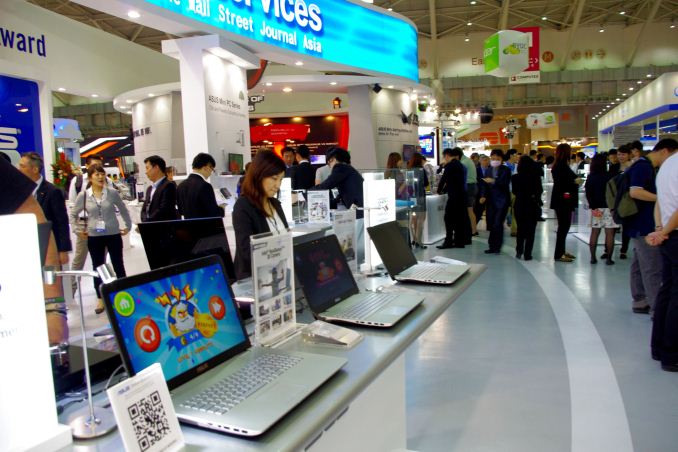
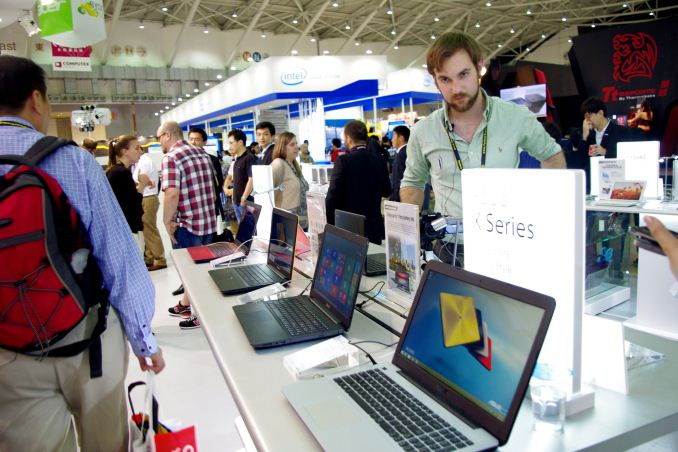
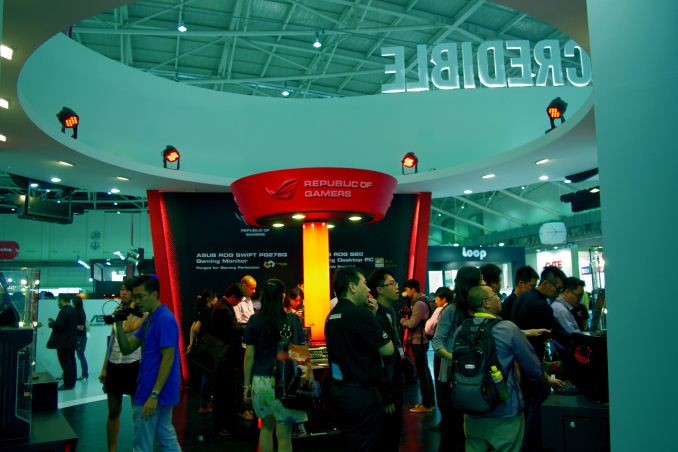


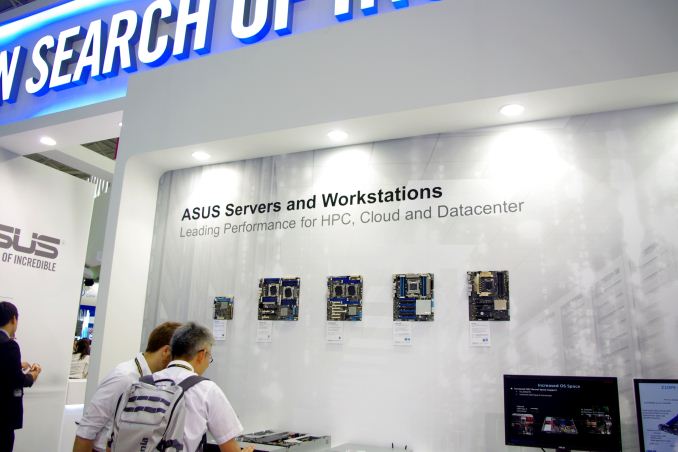
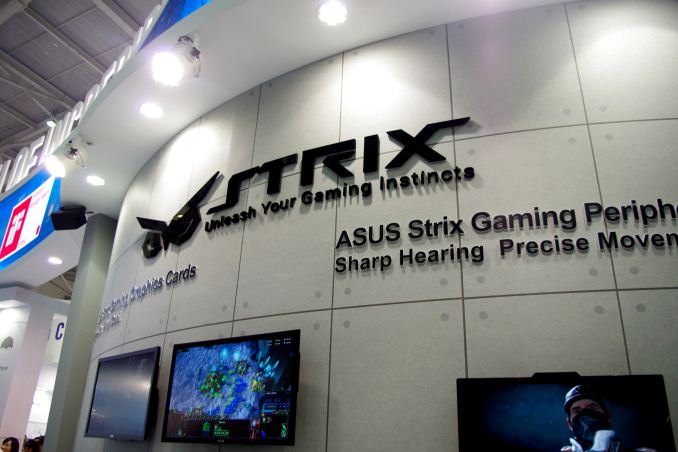
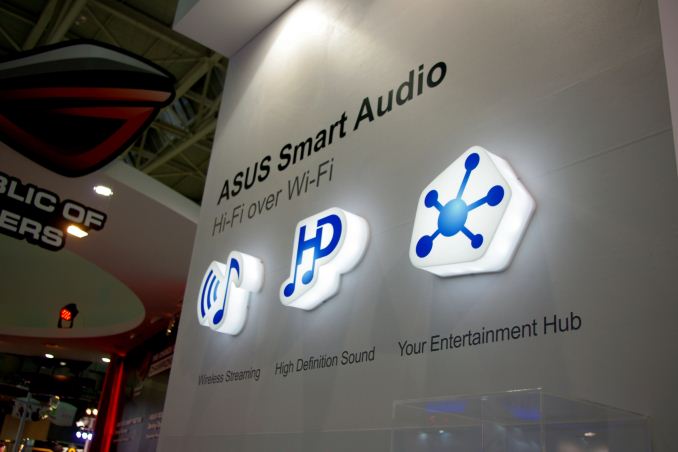
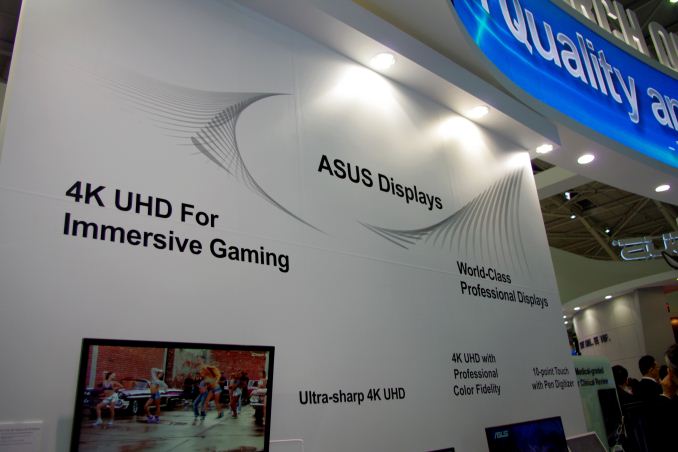
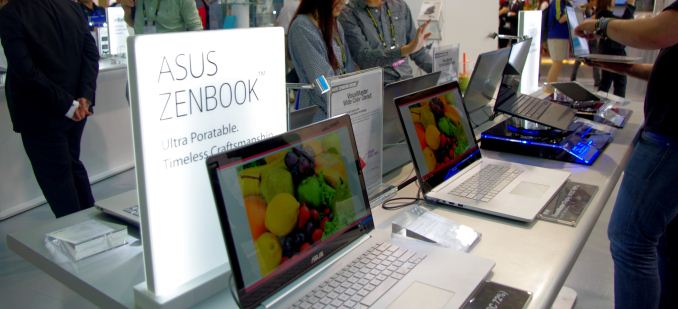


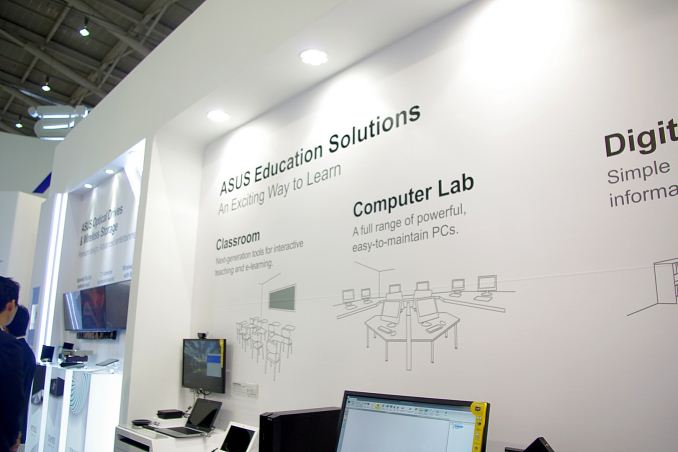









23 Comments
View All Comments
457R4LDR34DKN07 - Wednesday, June 11, 2014 - link
Are you sure the MPCIE combo IV is PCIE 3.0? JJ from ASUS told me it was PCIE 2.0.Ian Cutress - Wednesday, June 11, 2014 - link
I'm double checking for you. I was under the impression that it was only PCIe 2.0 by virtue of a lack of PCIe 3.0 drives but still PCIe 3.0 capable due to CPU lanes rather than PCH lanes. I'm sure I asked this question during my tour; I either remembered what I hoped, or what I heard, given the whirlwind of meetings that week. I'll update when I get an answer back.Ian Cutress - Wednesday, June 11, 2014 - link
I got a response: PCIe version not yet confirmed. Device is due out Q3, and they have time to choose either way. If you have a preference, note it here: I'm sure ASUS will be looking.PCIe 3.0 x4 will reduce the main GPU slot to PCIe 3.0 x8, but in my testing at 1080p gaming, frame rates drop less than 1%.
PCIe 2.0 x4 will give a full 16 lanes to the GPU, but might restrict some of the lane allocations for extra functionality. This effect is lessened by using a mITX board because there is less space for the extra functionality so the designers are restricted in what they can do.
457R4LDR34DKN07 - Wednesday, June 11, 2014 - link
I don't have a preference as I have a z77 and not compelled to upgrade until broadwell or beyond. If I was ASUS I would stick to PCIE 2.0 because: A) No current M.2 drives with gen3 B) PCIE 16X 3.0 might be more important in future video cards and is a more likely upgrade for a gaming motherboard.k4z3t5ub4k1 - Wednesday, June 11, 2014 - link
Awesome, thanks for taking the time to ask. IMO, on the Mini-ITX boards, I am hoping that the combo card is 4x PCIe 3.0 from the CPU. Since the Mobo only has one PCIe slot for graphics, thus SLI or Crossfire is not even an option, PCIe 8x is more than enough so satisfy the requirement of even a top end GPU. I would rather lose the 1% FPS going from 16x to 8x and gain the added storage speed that can be brought with M.2 over 4x PCIe 3.0.Freakie - Wednesday, June 11, 2014 - link
I would vote for PCIe 3.0. Waiting for drives to catch up is better than waiting for drives to be the ones that start. The faster the rest of the ecosystem is ready for a new technology, the faster we get the new technology. It would be nice if they could implement a BIOS feature to switch it from 2.0 to 3.0 (not sure if that is even possible) so that way we have the flexibility to upgrade in the future, or customize our current setup by deciding if we want to give the mPCIe device 3.0 bandwidth and sacrifice slight GPU performance, or give the device 2.0 bandwidth and keep the performance.In the end, I think SSD's need more attention than GPU's right now.
dgingeri - Wednesday, June 11, 2014 - link
I saw my MB up there in the Server section. The Z97-WS is a really nice board, but I have already had trouble with it. The DIMM slots 3 and 4 died on me after 10 days.I understand that issues like this do come up once in a while. (I'm the admin of a server software test lab. As reliable as server hardware is, I still have about a quarter of my time taken up replacing defective parts.) Still, Asus's support system is a bit lacking when things do go bad. I started this ticket last Thursday, and they still haven't shipped my replacement board. The hoops I had to jump through took me until yesterday to get done, and they say they'll ship it within 48 hours. It looks like I probably won't have a replacement in time for the weekend. This has discouraged me from buying any of their server line for my employer. It just takes too long to get things swapped, specifically because their support system is flawed.
extide - Wednesday, June 11, 2014 - link
If both slots on a single channel no longer work you may want to try removing and re-inserting the CPU... Sometimes you can have issues like that.dgingeri - Wednesday, June 11, 2014 - link
yeah, tried that. no luck. There are a couple solder points on the back of the board at the DIMM slots that look suspect, though. That's why I went for the RMA.martixy - Wednesday, June 11, 2014 - link
I've been waiting for precisely this article.Light on the details, but in any case at least we have an update on upcoming release dates, be it from here or other coverage of Computex.